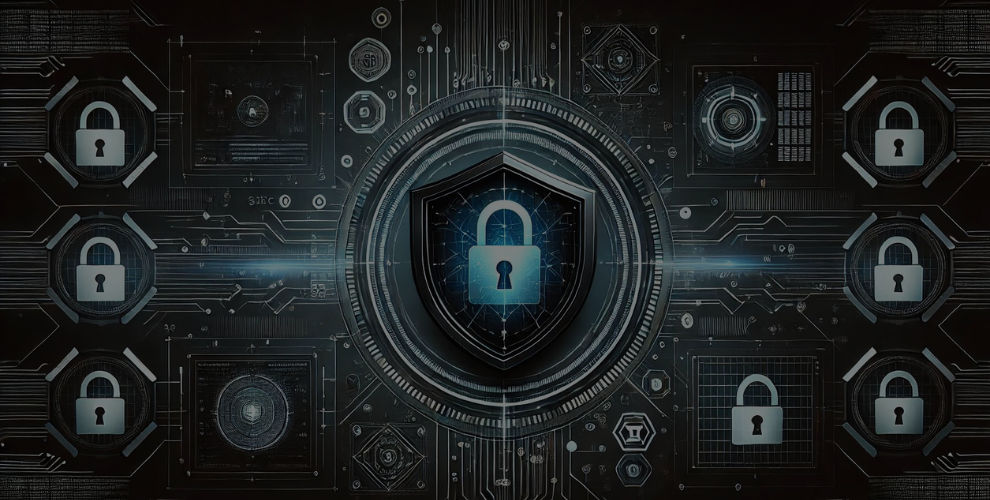
Master Cybersecurity in Minutes: Quick Tips
Table of Contents
Introduction
Welcome to WikiGlitz!
We’ve brought you this amazing blog to help you master cybersecurity in just a few minutes.
In today’s fast-paced digital world, protecting your personal information online is more important than ever.
With cyber threats evolving rapidly, knowing how to secure your data and devices can seem overwhelming.
But don’t worry—we’ve got you covered with simple and effective cybersecurity tips that you can apply quickly to keep your information safe.
Key Takeaways:
- Quick cybersecurity tips can significantly enhance your online security in just a few minutes.
- Focus on essential cybersecurity practices to protect your computer and personal information.
- Even beginners can implement these fast cybersecurity tips for improved protection.
Section 1: Understanding Cybersecurity Basics
What Is Cybersecurity?
Cybersecurity is defending against cyberattacks on systems—hardware, software, and data—that are connected to the internet.
It’s crucial for safeguarding personal and professional information from unauthorized access, disruption, or destruction.
The scope of cybersecurity extends beyond just protecting data—it also involves ensuring the integrity and availability of systems and services that individuals and businesses rely on.
Why Is Cybersecurity Important?
With the rise of digital transactions, remote work, and online communication, securing your digital life has never been more critical.
Cybersecurity prevents identity theft, financial fraud, and unauthorized access to personal data, ensuring your online activities remain private and secure.
In today’s interconnected world, a single breach can lead to significant financial loss, reputational damage, and legal consequences.
Common Cyber Threats to Be Aware Of
From phishing scams to sophisticated malware, the variety of cyber threats is vast. Some of the most common include:
- Phishing Attacks: These deceptive emails or messages are designed to steal personal information such as login credentials or financial details. Phishing attacks often masquerade as legitimate communications from trusted organizations.
- Malware: Malicious software that can damage or disable computers, steal information, or even allow attackers to take control of a device. Malware comes in various forms, including viruses, worms, Trojan horses, and spyware.
- Ransomware: Malware that encrypts a user’s data and requests money in ransom to unlock it is known as ransomware. Ransomware attacks have become increasingly common, targeting both individuals and organizations.
- Social Engineering: Tactics that exploit human psychology to trick individuals into revealing sensitive information. This can include pretexting, baiting, and tailgating, among others.
- DDoS Attacks: Distributed Denial of Service attacks overwhelm a network or website with traffic, causing it to become slow or unavailable. These attacks are often used to disrupt operations or distract security teams during more targeted attacks.
Section 2: Quick Cybersecurity Tips for Beginners
Tip 1: Use Strong, Unique Passwords
One of the simplest yet most effective ways to improve cybersecurity is by using strong, unique passwords for each of your accounts.
Passwords should be at least 12 characters long and include a mix of upper and lowercase letters, numbers, and special characters.Don’t make your password contain information that is simple to figure out, like your birthday or a popular word.
To create and safely save complicated passwords, think about utilizing a password manager. This reduces the risk of password-related breaches, which are often the easiest entry point for hackers.
Tip 2: Enable Two-Factor Authentication (2FA)
Two-factor authentication adds an extra layer of security by requiring not just your password, but also a second form of verification, like a code sent to your phone or generated by an authenticator app.
Implementing 2FA is a quick and easy step that greatly enhances the security of your most sensitive accounts, such as email, banking, and social media.
Tip 3: Keep Your Software Updated
Regularly updating your software is crucial for protecting against vulnerabilities that hackers might exploit. Software updates often include security patches that fix bugs or vulnerabilities discovered by developers.
This includes your operating system, antivirus programs, web browsers, and any other software you use frequently. Setting your devices to update automatically can ensure you never miss critical updates that could protect you from the latest threats.
Section 3: Best Cybersecurity Practices to Protect Your Data
Practice 1: Regularly Back Up Your Data
Backing up your data ensures that you won’t lose important information in the event of a cyber attack, hardware failure, or accidental deletion. Use both cloud-based services and physical storage options, such as external hard drives, to keep your data safe.
Regular backups should be part of your cybersecurity routine. Aim to back up your data at least once a week, and ensure that backups are stored in a secure location, separate from your primary devices.
Practice 2: Be Wary of Phishing Scams
Always double-check the source of emails and messages before clicking on any links or providing personal information. Phishing scams often disguise themselves as legitimate communications from trusted companies, such as banks or online retailers.
They may use urgent language or scare tactics to trick you into revealing sensitive information. Look for telltale signs of phishing, such as poor grammar, suspicious email addresses, or unexpected attachments.
Practice 3: Secure Your Home Network
Your home Wi-Fi network can be a gateway for hackers if it’s not properly secured. Change the default password on your router to a strong, unique one, and enable WPA3 encryption, the latest and most secure Wi-Fi encryption standard.
Additionally, consider hiding your network’s SSID (name) to make it less visible to potential attackers. It’s also a good idea to set up a separate guest network for visitors, which limits access to your primary network and its connected devices.
Section 4: Fast Cybersecurity Tips for Immediate Protection
Tip 1: Log Out of Accounts When Not in Use
Always log out of your accounts when you’re done using them, especially on public or shared computers. This simple step can prevent unauthorized access to your accounts and data, particularly in situations where you might forget to close a browser or app properly.
Logging out is especially important for sensitive accounts like online banking, email, and social media.
Tip 2: Avoid Public Wi-Fi for Sensitive Transactions
Avoid accessing sensitive accounts or making transactions over public Wi-Fi unless you’re using a virtual private network (VPN) for added security.
By encrypting your internet connection, a VPN increases the difficulty of data interception by hackers.If you must use public Wi-Fi, avoid logging into accounts or entering sensitive information.
Tip 3: Monitor Your Accounts for Unusual Activity
Regularly review your bank statements, email accounts, and other online services for any signs of unauthorized activity. Set up alerts for unusual login attempts or large transactions, which can help you catch potential breaches early.
If you notice anything suspicious, take immediate action to secure your accounts by changing passwords and enabling 2FA. Early detection is key to minimizing the damage caused by a breach.
Section 5: Essential Cybersecurity Tools and Resources
Tool 1: Antivirus Software
Reliable antivirus software is your first line of defense against malware and other threats. Ensure your antivirus is up-to-date and running regular scans on your devices.
Modern antivirus programs also offer features like real-time protection, firewall management, and phishing detection, providing comprehensive security for your system.
Choose an antivirus that is well-reviewed and frequently updated to keep pace with the latest threats.
Tool 2: Password Managers
Password managers help you create and store complex passwords securely, reducing the risk of password-related breaches.
They can also auto-fill your login credentials on websites and apps, saving you time and ensuring you always use the correct, secure password.
Most password managers are encrypted and require a master password to access your saved passwords, adding a layer of security.
Tool 3: Virtual Private Networks (VPNs)
Use a VPN when accessing the internet over unsecured networks, such as public Wi-Fi.
VPNs are also useful for maintaining privacy by masking your IP address and browsing activity from ISPs and potential cyber criminals.
Look for a VPN service that offers strong encryption, a no-logs policy, and servers in multiple locations for flexibility.
Tool 4: Firewalls
A firewall acts as a barrier between your computer and the internet, controlling incoming and outgoing network traffic based on security rules.
Most operating systems come with built-in firewalls, but you can also use third-party firewalls for enhanced protection.
Configuring your firewall properly can prevent unauthorized access to your network, protecting against both external and internal threats.
Tool 5: Encryption Tools
Encryption tools protect sensitive data by converting it into a code that can only be deciphered with the correct key.
This is especially useful for protecting confidential files, emails, and communications. Many encryption tools are available, ranging from full-disk encryption software like BitLocker (Windows) and FileVault (macOS) to email encryption services like ProtonMail.
Using encryption ensures that even if your data is intercepted, it remains unreadable without the encryption key.
Section 6: Advanced Cybersecurity Practices for Enhanced Protection
Practice 1: Educate Yourself About Social Engineering
Attacks using social engineering take advantage of human psychology as opposed to technological flaws. These attacks often involve tricking individuals into giving away sensitive information or access credentials.
Educate yourself about common social engineering tactics, such as phishing, pretexting, baiting, and tailgating. Understanding these methods can help you recognize and avoid falling victim to them.
Practice 2: Implement Multi-Layered Security
Singular security measures are insufficient to defend against advanced cyberattacks. Implement a multi-layered security approach by combining various tools and practices.
For example, use antivirus software, firewalls, encryption, and 2FA together to create multiple barriers against potential attacks.
This approach reduces the risk of a successful breach by ensuring that if one layer is compromised, others remain in place to protect your data.
Practice 3: Stay Informed About Emerging Threats
Cyber threats are constantly evolving, with new vulnerabilities and attack methods emerging regularly.
Stay informed about the latest cybersecurity news by following reputable sources such as cybersecurity blogs, industry reports, and government advisories.
Understanding the current threat landscape allows you to adapt your security practices to address new risks. Subscribe to security bulletins or join cybersecurity forums to keep up with the latest developments.
Conclusion
Thank you for joining WikiGlitz on this journey to mastering cybersecurity in minutes.
By applying these quick and easy tips, you can significantly enhance your online security and protect your personal information from cyber threats.
Whether you’re new to cybersecurity or looking to improve your existing practices, these strategies offer a strong foundation for keeping your digital life safe.
Remember, cybersecurity is an ongoing process—stay vigilant, stay informed, and stay secure.
Follow WikiGlitz for more insights and stay ahead in the ever-evolving world of technology.
FAQs
How can I improve cybersecurity quickly?
To improve cybersecurity quickly, start by using strong, unique passwords, enabling two-factor authentication, and keeping your software up-to-date. Additionally, avoid public Wi-Fi for sensitive transactions and monitor your accounts for unusual activity.
What are the best cybersecurity practices?
The best cybersecurity practices include regularly backing up data, being cautious of phishing scams, securing your home network with strong passwords and encryption, and staying informed about the latest cyber threats.
How can I defend against online attacks with my computer?
Protect your computer from cyber threats by installing reliable antivirus software, using a firewall, enabling two-factor authentication, and avoiding suspicious links or downloads. Regularly update your software and back up your data.
What is the quickest way to learn cybersecurity?
The quickest way to learn cybersecurity is by focusing on the basics: understanding common threats, using strong passwords, enabling 2FA, and staying informed about the latest cybersecurity news. Online courses, blogs, and forums are also valuable resources.
How can I secure my personal information online?
Secure your personal information online by using encrypted communication channels, regularly updating your passwords, enabling 2FA, and avoiding sharing sensitive information over unsecured networks. Consider using a VPN and encryption tools for added protection.
Want to keep up with our blog?
Our most valuable tips right inside your inbox, once per month.
Error: Contact form not found.
WikiGlitz Team
Welcome to WikiGlitz, your ultimate destination for tech insights and innovation. Our expert team is dedicated to delivering free resources and professional advice on various technology topics, including Artificial Intelligence, Cyber Security, Cloud Computing, and more. We strive to empower our readers with up-to-date information and practical guidance, ensuring you stay ahead in the rapidly evolving tech landscape. At WikiGlitz, we are passionate about making complex technology accessible to everyone. Our team of seasoned experts curates content that is both informative and engaging, helping you understand and leverage the latest tech trends. Whether you're a tech enthusiast or a professional, WikiGlitz is your go-to source for reliable, expert-driven content. Join us on this journey to explore and embrace the future of technology.





